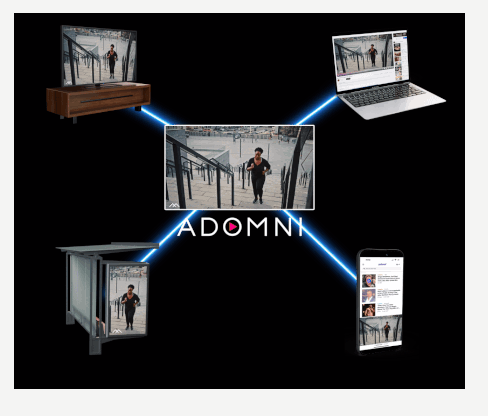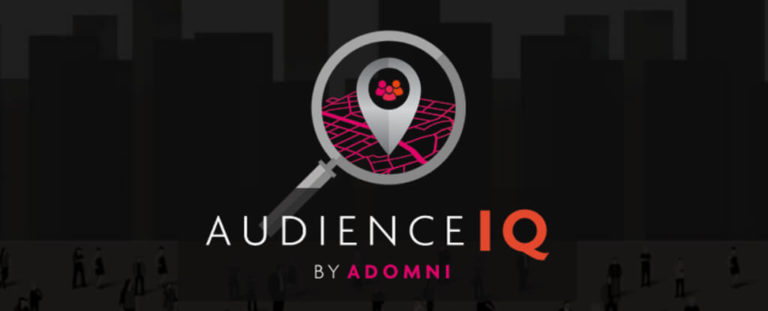AdOmni’s Jonathan Gudai On Changing Channels From Digital Out-Of-Home to CTV
By Jon Lafayette for TVREV
Published: January 31, 2025
In Las Vegas, you can’t help but notice the flashy digital billboards on the highway from the airport, on the strip ,and in casinos and other venues.
One of the companies responsible for all that digital out-of-home advertising is 10-year-old, Sin City-based AdOmni, which has benefited from the fast growth of the DOOH business.
Now, with connected TV expected to be the next hot medium, AdOmni is hoping to ride the wave as streaming takes over the video industry. Founder and CEO Jonathan Gudai told TVRev he’s betting that AdOmni’s ability to make billboards easier to buy, target and measure will help solve similar issues for buyers of streaming video.
Earlier this month, AdOmni launched Smart Video Everywhere, a platform designed to enable brands to reach audiences outdoors and indoors, with streaming commercial inventory on some of the biggest streamers: Netflix, Amazon Prime Video and YouTube. Advertising everywhere was the game plan all along.
“We focused for the first eight or nine years on digital out-of-home and now we’ve expanded into other video channels,” Gudai said. “We recognize that marketers now have a challenge because there's all this fragmentation around consumers' attention.”
Gudai acknowledges that the streaming and CTV ad market are already crowded and complicated, which could make it tricky for AdOmni to make a mark. But he says there are parallels to digital out-of-home, suggesting AdOmni has something to offer the industry.
To become a player in the DOOH space, AdOmni had to overcome traditional ways of doing business, long-term contracts, fragmented supply, and develop new ways of measuring exposure and effectiveness.
“It started off as very small and tight. Over time, trust was built and now the digital out-of-home ecosystem has everything pretty much programmatically enabled. And I think with CTV, it's the same thing,” he said.
Whether a particular brand looks at DOOH as one of its main marketing options or somewhere near the bottom of its media plan, coordinating exposure and messaging is increasingly important to all advertisers — and a problem that’s been difficult to solve.
“We said, ‘let's build a platform that brings them all together into one planning and activation solution so you don't have to think about going to this DSP [demand side platform] to buy Netflix, this one to buy YouTube,’” Gudai said. “Just AdOmni will enable you to plan and activate across all the channels from one convenient spot.”
Because Netflix, Amazon and YouTube are pretty much walled gardens, AdOmni had to make deals to be able to integrate with their ad sales systems before launching.
“Thankfully at this point, most of the big publishers have made their inventory programmatically accessible. It's a lot of what we did with digital out-of-home. We can use the same methodology on auctions and real-time bidding,” he said, adding that he expects to announce a more direct inventory arrangement with one of the larger, traditional media companies.
To be sure AdOmni is still a big believer in DOOH.
“People are still moving about in their daily lives and so it's a really powerful medium to reach people in a non-interruptive way,” Gudai said. “It is also a big canvas so you can tell a story and you have your brand show up in a really kind of sizable way physically. And so, yeah we're still very bullish about digital out-of-home as a segment. We'll continue to see nice double digit percentage growth.”
PwC forecasts that the growth rate for DOOH from 2003 to 2028 will be 6.33%, with revenue increasing from $4.7 billion in 2024 to $5.28 billion in 2028. At that point in time, DOOH will account for a 48.9% share of all outdoor advertising spending.
“Our model is an impression based sales process. Just like digital online. We translate the time into Impressions and then we let people put in budgets the same way they're doing it on Google and other platforms, and then they're just paying for what they can afford to do or what their targeted audience is in a very flexible way,” Gudai said.
AdOmni expects that clients who already use its platform for DOOH will be among the first to use Smart Video Everywhere to buy CTV.
“There are definitely opportunities for us to show them performance results, to combine them, to bundle that through us,” Gudai said.
But he thinks that there is a bigger market for Smart Video Everywhere.
“We saw some white space when it came to the platform experience and the measurement side of things,” Gudai said. “The ability to bring inventory from lots of different places, whether it's the walled gardens, like Amazon or Google, or the open web, into one place where you can plan, activate and pull reporting on impressions and outcomes from a single partner, is pretty novel.”
Making buying video easier isn’t a unique concept. At CES in early January, Comcast Advertising announced Universal Advertising, designed as an “easy button” that makes inventory from publishers including NBCUniversal, Paramount, Fox, DirecTV, Warner Bros. Discovery, TelevisaUnivision, AMC Networks, A+E Networks, Roku, Vizio and Xumo available from a single source.
“Ultimately making it easier for marketers to buy CTV will have financial benefits for marketers and publishers,” Gudai said.
Putting inventory into programmatic platforms used to scare video publishers who were concerned their inventor would be commoditized and prices would fall.
“What the publishers realized is that if anything the opposite is happening. You can drive higher unit economics and revenue yield by layering on data and audience targeting. Marketers are going to spend more if they can reach a more qualified, ideal client profile,” Gudai said.
“I also believe that prices will adjust as time goes on. There’s more inventory and it’s going to become more favorable to the marketer,” he added.
AdOmni is working on another product, Jeen AI (as in genie), which uses generative AI to plan campaigns that Smart Video Everywhere will be able to execute.
“It's how do you make the marketer experience easier. But along the way also better,” Gudai said. It will be trained off historical campaigns and use a lot of data to make recommendations, he said.
Meanwhile, the ad-tech industry is facing its own consolidation, as marketers seek more efficiency as well as higher effectiveness.
In what has been a busy month of January, T-Mobile agreed to acquire Vistar Media, another company that provides buying and selling technology for digital out-of-home advertising, for $600 million in cash.
Will AdOmni — privately owned mostly by its founders and backed by financing from venture capital firms — be a buyer or look to be bought?
“Yeah, there always are opportunists out there. And there's always strategic deals that are interesting to look at or to contemplate,” Gudai said.
“We still feel like digital out of home is under invested in holistically and so deals like that and just more education in the marketplace about how easy it is now to activate digital out of home alongside other video are interesting,” he said, adding that AdOmni is getting its share of calls from bankers looking to make a deal happen.

But for now AdOmni expects to keep its nose to the grindstone.
“We've put a lot of time and investment into this new offering,” Gudai said. “There's always going to be opportunities that come our way, but I think at this point we’re more focused on the client experience and showing marketing results versus, you know, the banker stuff.”
Written By: Jon Lafayette
To get the latest updates on out of home advertising, digital marketing and technology, follow us on:
Or sign up for our newsletter.






